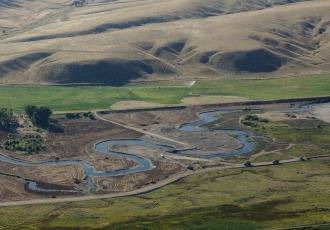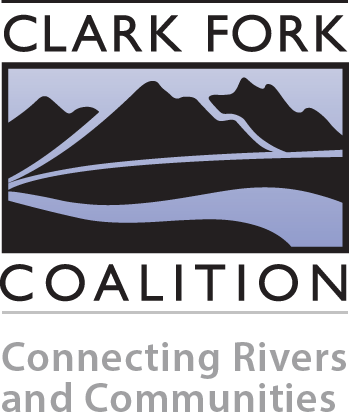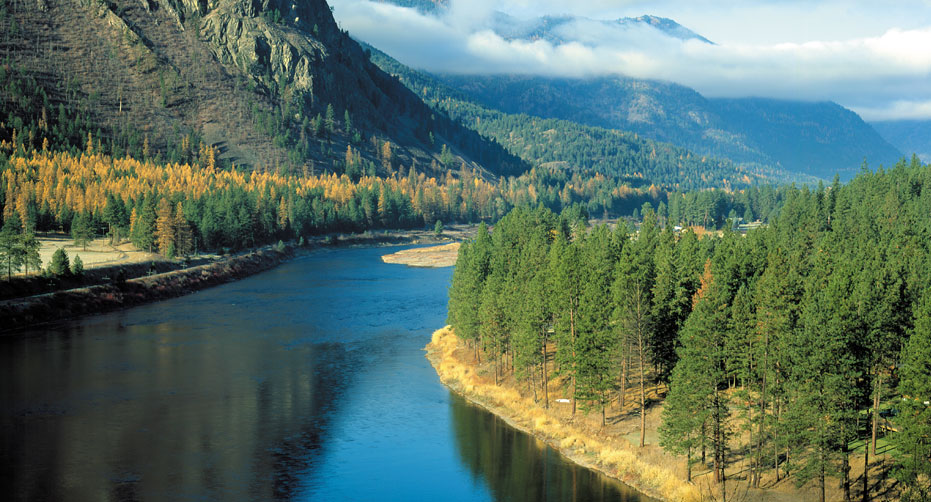
Is Superfund cleanup of mining wastes in the Clark Fork making a difference? Yes! At least it is in terms of total amounts of copper and arsenic. And that’s especially good news because both are toxic: copper is extremely bad for fish, and arsenic is poisonous for people.
According to a recent study by scientists at the U.S. Geological Survey*, total copper, arsenic, and suspended sediment levels decreased from 1996 to 2015 in the Clark Fork watershed from lower Silver Bow Creek down to the Clark Fork River above Missoula (below the former Milltown Dam). The floodplains around Silver Bow Creek and the Clark Fork River were declared Superfund sites because they were contaminated by mining and smelting wastes that washed downstream from Butte and Anaconda during the devastating 1908 floods. Since Superfund designation, exposed mine dumps in Butte and Anaconda have been capped, 26 miles of Silver Bow Creek have been cleaned up, the reservoir of toxic sediments behind Milltown Dam have been removed, and cleanup is underway along 45 miles of the mainstem of the Clark Fork. This report provides new evidence that the river is definitely reaping the benefits.
 How big are the decreases? Let’s look at copper. For the 1996-2015 period, the authors consider the decreases to be large at the Silver Bow Creek station; moderate in the Clark Fork at stations near Galen and above Missoula; and small but still statistically significant at four other stations from Deer Lodge to Turah. Total arsenic levels also decreased at each of these sites, although not as dramatically. It’s important to note that the researchers adjusted the measured metal concentrations to account for differences in river flows in order to understand whether metal input had really changed – and indeed it had.
How big are the decreases? Let’s look at copper. For the 1996-2015 period, the authors consider the decreases to be large at the Silver Bow Creek station; moderate in the Clark Fork at stations near Galen and above Missoula; and small but still statistically significant at four other stations from Deer Lodge to Turah. Total arsenic levels also decreased at each of these sites, although not as dramatically. It’s important to note that the researchers adjusted the measured metal concentrations to account for differences in river flows in order to understand whether metal input had really changed – and indeed it had.
The scientists also zoomed in to take a look at the period right after Milltown Dam was removed. They found that although suspended sediment and copper temporarily increased downstream after the dam breach in 2008-09, overall, both copper and arsenic decreased below Milltown between 2011 and 2015. That result stands to reason: removing the dam also meant removing many tons of contaminated sediments behind it, so those sediments are no longer a source of metals to the river. But it’s exciting to see verification of that enormous accomplishment in this study.
While these decreases are excellent news, the report also confirms that there’s more work to do: the section of the upper river from Galen to Deer Lodge contributes a disproportionate share of copper and sediment to the river, reaching as far downstream as Missoula. Within that reach, although streamflow increases by less than a factor of 2, total copper increases by a factor of four, and sediment increases by a factor of 5. In fact, that 10-mile reach alone accounted for 41% of the total copper in the river in the Clark Fork above Missoula from 2011 to 2015.
 Fortunately, cleanup of the upper river, including that reach, began in 2012 and will continue for the next decade. Cleanup of four miles of the floodplain on our ranch at Galen is now finished, as is cleanup of a reach 2.5 miles upstream. We are confident that removing wastes from the rest of the river’s floodplain – the cleanup we’ve been working for and continue to track – will translate to further decreases in metals over time.
Fortunately, cleanup of the upper river, including that reach, began in 2012 and will continue for the next decade. Cleanup of four miles of the floodplain on our ranch at Galen is now finished, as is cleanup of a reach 2.5 miles upstream. We are confident that removing wastes from the rest of the river’s floodplain – the cleanup we’ve been working for and continue to track – will translate to further decreases in metals over time.
It took decades of hard work by advocates for the river to make cleanup happen. Today we’re seeing tangible benefits from that unwavering commitment to a clean and healthy Clark Fork. Thank you to everyone who made it possible!
Want the details? See the USGS report here.
*Water-Quality Trends and Constituent-Transport Analysis for Selected Sampling Sites in the Milltown Reservoir/Clark Fork River Superfund Site in the Upper Clark Fork Basin, Montana, Water Years 1996-2015, by Steven Sando and Aldo Vecchia. Scientific Investigations Report 2016-5100, U.S. Geological Survey, 2016.
< Back to blog


